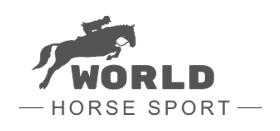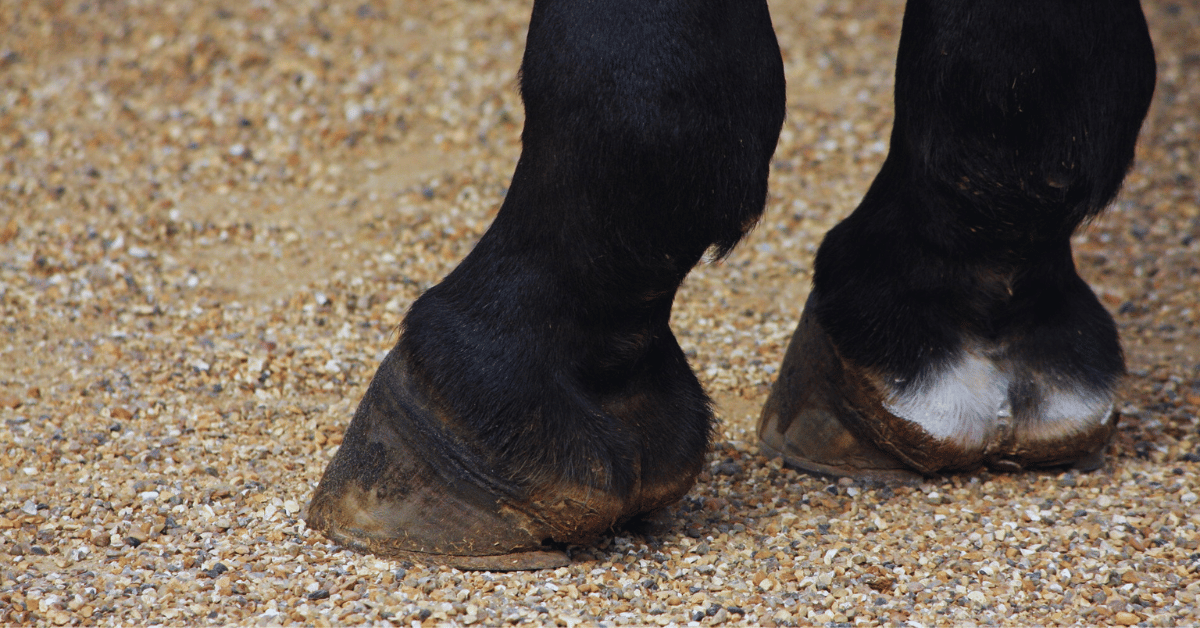Cracked, overgrown, neglected hooves—these are more than just a cosmetic issue for horses; they’re a ticking time bomb for pain and debilitating lameness. Do horse hooves grow ? Absolutely.
Like human nails, horse hooves grow continuously, but unlike nails, an untrimmed hoof can distort the delicate balance of a horse’s entire body. When left unchecked, it can lead to uneven gaits, joint strain, and even chronic health complications. Couple this with factors like poor ground conditions or seasonal changes, and suddenly hoof care becomes a critical priority.
But there’s good news: with proper trimming, regular inspections, and knowledgeable maintenance, you can prevent these issues before they arise. Healthy, well-managed hooves don’t just promote comfort—they’re foundational to your horse’s overall performance and vitality. Want to learn how to keep those hooves in top shape? Let’s take a step forward (pun intended) into the world of hoof care mastery.
Understanding Horse Hoof Growth
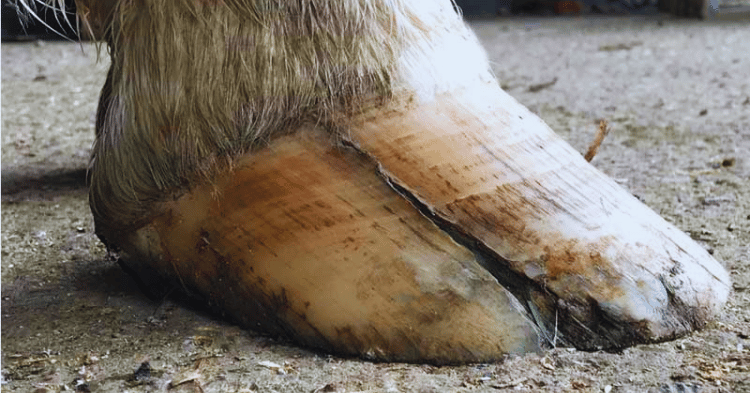
Horse hoof growth is a complex process influenced by various factors. Routine care is essential to ensure the hooves remain healthy and functional.
Factors Affecting Hoof Growth
Several factors can impact the rate and quality of hoof growth in horses. Understanding these can help horse owners provide better care for their animals.
Nutrition: Proper nutrition plays a significant role in hoof growth. Horses need a diet balanced in quality protein, minerals, vitamins, and fatty acids. Limiting simple carbohydrates may also be crucial depending on the horse’s metabolic health. For nutritional tips on maintaining healthy hooves, see our guide on can horses eat bananas.
Genetics: The breed and genetics of a horse can influence hoof growth. Different breeds have varying hoof structures and growth rates.
Age: Hoof growth rate can change with age. Younger horses typically have faster-growing hooves, while older horses may experience slower growth.
Environment: Wild horses naturally maintain their hooves by moving across abrasive surfaces, whereas domestic horses require regular trimming due to less movement.
Health Conditions: Conditions such as laminitis or hoof-related diseases can significantly affect hoof growth and health.
Importance of Routine Care
Routine care is vital to ensure horse hooves remain healthy. Regular trimming, proper nutrition, and routine farrier visits are essential components of hoof maintenance.
- Trimming Frequency: The average horse needs to see a farrier every 4 to 6 weeks, depending on the growth rate and health of their hooves. Regular trimming helps maintain the correct shape and prevents overgrowth.
| Horse Care Task | Frequency |
|---|---|
| Farrier Visits | Every 4–6 weeks |
| Hoof Trimming | As needed, usually every 4–6 weeks |
Scheduled Farrier Visits: Regular farrier visits help in creating a uniform shoeing cycle without extremes, leading to healthier hooves (Life Data Labs). Consider learning more about farrier visits and shoeing.
Proper Nutrition: Proper diet ensures the growth rate and quality of the hoof horn. Nutritional changes will only affect new hoof growth, and it may take 6-12 months for a horse to fully replace its hoof wall, depending on various factors (Zoetis Equine).
Regular care and attention to these aspects ensure healthy hoof growth and prevent potential issues. For more information on how to keep your horse healthy, check out our articles on do horses get ticks and do horses like humans.
Managing Horse Hooves
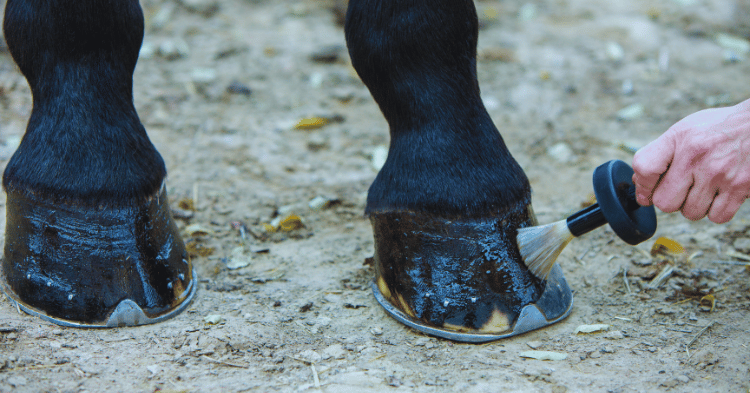
Proper management of horse hooves is essential for their growth and overall health. This includes considering factors like nutrition and the horse’s age.
Nutritional Influence on Hoof Growth
Nutrition plays a vital role in the growth rate and quality of a horse’s hoof horn. Ensuring that a horse’s diet includes quality protein, balanced minerals, vitamins, and fatty acids is key to maintaining strong and healthy hooves. Limiting simple carbohydrates can also be important, especially if the horse has metabolic health issues.
A balanced diet should support ample hoof wall, heels, bars, wall thickness, soles, and cushiony frogs. Overmanaging hoof care, such as trimming every 4 weeks, may not always be necessary, especially during slower growth periods. Natural wear from the horse’s movement can often suffice.
| Nutritional Element | Importance for Hoof Growth |
|---|---|
| Quality Protein | Essential for hoof horn production; promotes strength and elasticity. |
| Balanced Minerals (e.g., zinc, copper) | Crucial for keratin formation; deficiencies can lead to weak hoof walls. |
| Vitamins (e.g., biotin) | Supports hoof health; biotin is particularly known for improving hoof quality. |
| Fatty Acids | Provides moisture and flexibility, reducing the risk of cracks. |
| Limited Simple Carbohydrates | Prevents laminitis and other metabolic-related hoof issues. |
Age-Related Changes in Hoof Growth
As horses age, their hooves undergo changes that can impact their shape and health. Older horses tend to experience flaring and loss of sole depth due to the natural loss of collagen associated with aging. This is similar to how aging affects collagen in human skin.
Regular hoof maintenance is crucial to address these age-related changes and ensure hoof health and comfort. Failing to maintain routine hoof care or delaying farrier visits can lead to serious hoof problems. Therefore, it’s important to adapt the hoof care routine to the specific needs of older horses to maintain optimal hoof health.
To learn more about horse care and other interesting topics, you can visit can horses eat bananas and can horse see color.
By understanding the nutritional needs and age-related changes in hoof growth, horse owners can better manage their horses’ hooves, ensuring they remain healthy and strong throughout their lives.
Hoof Care Practices
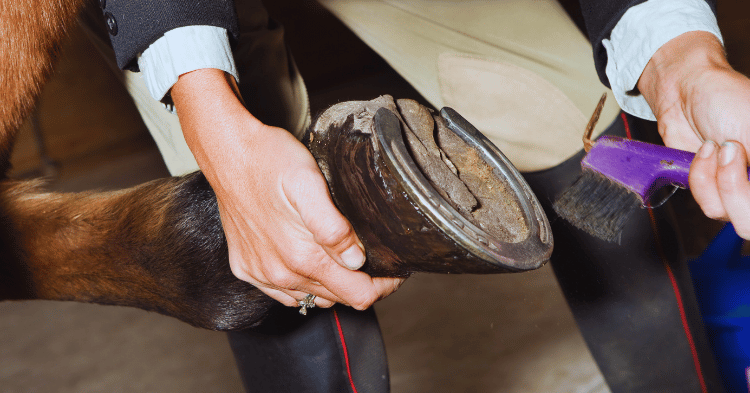
Regular hoof care practices are essential for maintaining the health and performance of your horse. This section will delve into the necessary steps and considerations for trimming frequency, methods, farrier visits, and shoeing.
Trimming Frequency and Methods
Regular trimming is crucial to ensure that the hooves stay in optimal condition. Neglecting to trim can lead to uneven wear, discomfort, and potential health issues.
- Frequency: Most horses need trimming every 4 to 8 weeks, depending on the growth rate of their hooves and their living conditions. Horses that live on softer surfaces like pasture and stable bedding will require more frequent trims (source).
| Type of Horse | Trimming Frequency |
|---|---|
| Shod Horses | Every 4 – 8 weeks |
| Unshod Horses | Every 3 – 6 weeks |
- Methods: Balanced and regular trimming by a qualified farrier maintains the hoof capsule in a healthy state. The farrier removes the overgrown hoof material and shapes the hooves to correct form, ensuring the horse walks evenly and comfortably.
Farrier Visits and Shoeing
Regular visits to a farrier are essential for both shod and unshod horses. The farrier not only trims the hooves but also applies shoes if necessary, and addresses any hoof-related issues.
Frequency of Farrier Visits: On average, a horse needs to see a farrier every 4 to 6 weeks. This interval may vary based on factors like the horse’s activity level, damage to the hooves, or the presence of hoof-related diseases.
Shoeing : protects horse hooves from wear, cracks, and rough terrain, ensuring comfort, support, and performance for domesticated lifestyles.
Purpose: Shoes provide protection and traction, which may be necessary for horses that perform heavy work or are used on hard, rocky surfaces. They can also correct various hoof issues.
Types of Shoes: Different types of shoes are available, including steel, aluminum, and specialized therapeutic shoes. The choice depends on the horse’s specific needs and the type of activities they engage in.
Neglecting hoof care can put the horse at risk of developing serious issues, such as thrush. A Dutch study of 942 randomly selected horses found that 45% had thrush. It’s vital to maintain a schedule for trimming and farrier visits to ensure the horse’s comfort and hoof health.
For more tips on how to maintain your horse’s hooves, including nutritional influences and age-related changes, visit our sections on Nutritional Influence on Hoof Growth and Age-Related Changes in Hoof Growth.
Hoof Health and Common Issues
Impact of Ground Type on Hoof Condition
The type of ground a horse is kept on significantly affects the condition of its hooves (Quora). Horses in natural environments, such as wild settings, wear down their hooves through movement over varied terrain. This natural wear helps to maintain hoof health.
Typical Ground Conditions and Their Effects:
| Ground Type | Effect on Hooves |
|---|---|
| Hard Surfaces (e.g., concrete) | Rapid wear, increased sensitivity |
| Soft, Moist Ground (e.g., pastures in rainy areas) | Potential for overgrowth, softening of hooves |
| Rocky, Varied Terrain | Natural wear, stronger hoof structure |
| Stall or Stable Floors | Minimal wear, need for regular trimming |
Horses ridden or driven on hard surfaces can experience discomfort and sensitivity due to rapid hoof wear, much like cutting toenails too short (Quora). On the other hand, horses in softer, wet environments may experience overgrown and softened hooves, necessitating different care routines.
Signs of Healthy vs. Unhealthy Hooves
Understanding the signs of healthy versus unhealthy hooves is essential for horse owners. Regular inspection for these signs can help detect issues early and maintain the well-being of the animal.
Signs of Healthy Hooves:
- Smooth, even texture
- No cracks or splits
- Proper balance and shape
- Firm, yet pliable frog (the V-shaped structure on the underside)
- Consistent growth patterns
Signs of Unhealthy Hooves:
- Cracks, splits, or chips
- Extreme softness or dryness
- Uneven wear or overgrowth
- Deformities or irregular shapes
- Lameness or discomfort when walking
- Foul odor or discharge
Neglecting hoof care can cause severe overgrowth and deformities, affecting the overall health and well-being of the horse (Quora). Routine inspections, trimming frequency, and farrier visits are critical in managing hoof health. For more information on hoof care practices, visit our section on trimming frequency and methods and farrier visits and shoeing.
Wild horses in healthy ecosystems often maintain their hooves effectively through natural movement over varied terrain. However, even they can develop overgrown hooves if not enough movement occurs, leading to complications such as uneven wear and hoof deformities. Regular movement on diverse terrain can help ensure hoof health in both domestic and wild horses.
Explore more about horse care with our articles on can horses eat bananas, can horses eat pears, and can horse walk backwards.
